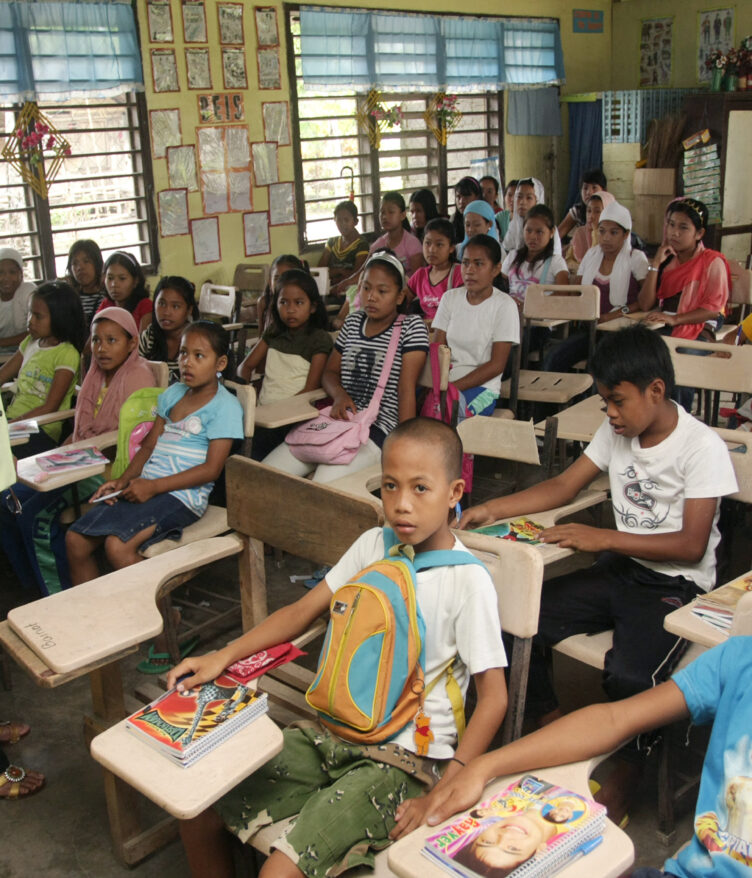IN JULY 1989, Republic Act 6727 or the Wage Rationalization Act was signed and increased the minimum wage rates of all Filipino workers in the private sector by P25.
This reflected a uniform minimum wage of P89 across all regions.
Fast forward 35 years later or in 2024, the minimum wage in the Philippines remained fixed at 610 PHP/day, as it had been in 2023.
Accordingly, the average minimum wage accounted for 354.32 PHP/day from 1989 to 2024, with an all-time high of 610.00 PHP/day in 2023 and a record low of 89.00 PHP/day in 1989, the Department of Labor and Employment (DOLE) indicated.
Photo Courtesy: Tradingeconomics.com | Department of Labor and Employment
The National Capital Region (NCR) has the highest cumulative minimum wage increase among all other regions, ranging from P484 to P521 in the last 35 years. It is the only region to accumulate over a P500 wage increase. The increase started from P89 in 1989 to between P573 and 610 since NCR RTWPB Wage Order No. 24 was implemented on July 16, 2023.
However, due to the economic condition and inflation the country is facing in the present day, minimum wage earners cannot hide their struggles in budgeting their incomes.
A 22-year old Angelie Torres, who is a Sr. Cashier at NCR with a P160 daily income shared, “Kaya naman ma-sustain ang gastusin pero minsan dumadating rin sa point na kakapusin ka dahil sa dami ng expenses at sa mahal ng bilihin sa ngayon.”
On the other end, the lowest accumulated increase in wage reflects the Bangsamoro Autonomous Region in Muslim Mindanao (BARMM), ranging from P247 to P272 since 1989.
Since the implementation of wage rationalization in 1989, the regional minimum wages have seen an increase ranging from 278% to 585%.
Wage hikes on previous administrations
Wage increase directives were consistently issued almost every year in one or more regions under all administrations, starting from the presidency of Cory Aquino up to the current administration of President Bongbong Marcos.
In the Cory Aquino administration (1986-1992), most of the regions saw additional increases following the wage rationalization in 1989. The P89 wage rationalization rate applied to both Region 10 and the Cordillera Administrative Region (CAR). However, they would only receive their first wage increase during the succeeding administration.
During the Fidel Ramos administration (1992-1998), all regions except for the newly formed CARAGA region, experienced wage hikes. Region 4, which had not yet been divided into CALABARZON and MIMAROPA, saw the highest cumulative increase at P87 during that period.

Photo Courtesy: republicasia
Wage increases during the Gloria Arroyo administration (2001-2010) exceeded P100 in some regions but were implemented gradually over nine years instead of being granted all at once. This was observed in NCR, with a cumulative increase of P154, and Region 4A, with a cumulative increase of P103. Region 4B saw the smallest increase during this period, at P35.
In the administration of Benigno Aquino III (2010-2016), cumulative wage hikes varied from P13 in Region 1 or the Ilocos Region to P87 in NCR.
As for the previous recent administration of Rodrigo Duterte (2016-2022), total wage increases also exceeded P100 in several regions, notably in CAR, Regions 1, 2, 5, 6, 8, and 11. These incremental increases, applicable to workers in non-agricultural establishments with more than 10 employees, amounted to over P100.
In the present administration of Ferdinand Marcos Jr., the regional wage board has so far issued directives for wage hikes varying from P20 to P50.
Currently, the House of Representatives is discussing bills that propose wage increases ranging from P150 to P750.
Proposed P100 private sector minimum wage increase 2024
On February 19, 2024, the Senate unanimously approved the bill mandating a P100-daily pay increase for the country’s minimum wage workers in its third and final reading. Although widely considered a viable solution, economists have voiced their concerns about its unintended repercussions, particularly for those in the informal sector who are not covered by the wage increase.
According to the previous statement of Department of Labor and Employment (DOLE) Secretary Bienvenido Laguesma on February 10, 2024, the proposed P100 minimum wage increase in the private sector’s minimum wage could pose challenges for some businesses.

Photo Courtesy: republicasia
“Medyo may kabigatan po. Dahil out of more or less one million na registered existing businesses sa atin, mahigit 900,000 nasa kategorya ng micro, small, and medium enterprises,” Laguesma shared in an interview on Dobol B TV.
According to Marikina 2nd District representative Stella Quimbo, they want the wage policy to be equitable and mindful of the diverse economic conditions across the country.
This notion is true for a 28-year old Jane Gadoy, an Admin Assistant, “Malaki ang maitutulong nito pero sana sa pagtaas ng minimum wage, hindi sabayan ng pagtaas ng mga bilihin dahil kung tataas din ang presyo ng mga ito, it’s nonsense!,” she shared.
Do you have a story to tell or a video that wants to be seen? Email us: [email protected]
With reports from Cybil Castillo, Danica Llante, and Nicole Thomas
How useful was this post?
Click on a star to rate it!
Average rating 0 / 5. Vote count: 0
No votes so far! Be the first to rate this post.
We are sorry that this post was not useful for you!
Let us improve this post!
Tell us how we can improve this post?









